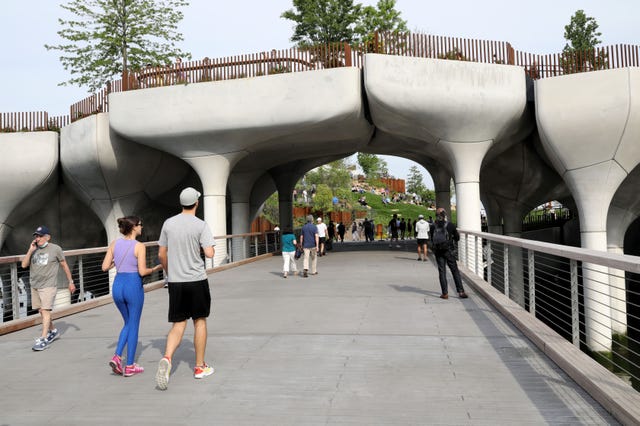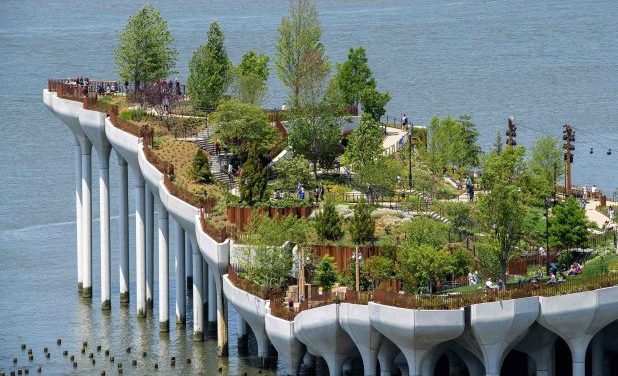New York City’s newest park, “Little Island,” opened just in time for spring /summer tourists. Visitors can explore the 2.4-acre refuge floating on the Hudson at the former site of the old Pier 55.
The following written content from Shaye Weaver

The futuristic-looking park, set upon massive pylons in the Hudson River will open at 6am for those eager to get in their morning strolls on the new verdant oasis. (If you want to go between noon at 8pm, high-traffic times, you’ll need to reserve a free entry on its website first). The new space is open until 1am daily, so there will be plenty of time to check it out, according to reps.
Once visitors walk through the vaulted opening of Little Island, they’ll walk into an open lawn and get a 360-degree view of the park, where they’ll see a gradient of colors and plantings that change as the elevation changes, from shrubs and vines to 40-foot trees.
Visitors can opt to walk up to Little Island’s highest points via walkways, or they can do a bit of light scrambling up boulders, much like at The Hills on Governors Island. Once at the top, parkgoers will get incredible views of Manhattan, the river and across to New Jersey.
There will also be three main lawns that visitors can sunbathe on and a secret garden full of only white blooms—from birch trees and crepe myrtles to roses and anemones that you can get to by walking through an arched trellis.
Next to the secret garden, a small amphitheater called The Glade will host shows and other events with the river and neighboring pier as its backdrop. Similarly, the main amphitheater will hold bigger performances right on the water.
Overall, Little Island will be home to 35 species of trees, 65 species of shrubs, and 270 varieties of grasses, perennials, vines and bulbs. In the fall, we spoke with its landscape architect and a founding principal of landscape architecture firm MNLA, Signe Nielsen, who said people will feel “engulfed in plants.”
Conceived in 2012, the park is the project of billionaire Barry Diller and his wife Diane von Furstenberg. When unveiled at the Cooper Hewitt in 2015, the plan by English designer Thomas Heatherwick envisioned an undulating configuration created by a series of “pods”—concrete pilings formed into tulip-shaped supports—set at varying heights. The effect was meant to evoke a “leaf floating on water.”
As is standard in NYC, however, the $250 million project was met with swift legal action: a lawsuit underwritten by real estate developer Douglas Durst for the City Club led to the cancellation of the park’s building permit in 2017. Later that year, Andrew Cuomo brokered a deal between Douglas and Diller and construction resumed. Read more from Timeout





